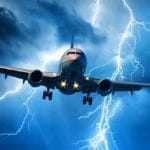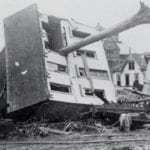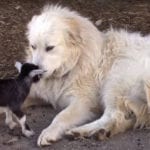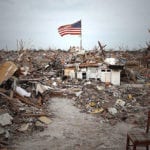 Music
Music  Music
Music  History
History 10 Less Than Jolly Events That Occurred on December 25
 Weird Stuff
Weird Stuff 10 Funny Ways That Researchers Overthink Christmas
 Politics
Politics 10 Political Scandals That Sent Crowds Into the Streets
 Weird Stuff
Weird Stuff Ten Bizarre Facts About The Doge Meme
 Our World
Our World 10 Ways Your Christmas Tree Is More Lit Than You Think
 Movies and TV
Movies and TV The 10 Coolest Stars to Set Sail on The Love Boat
 History
History 10 Things You Didn’t Know About the American National Anthem
 Technology
Technology Top 10 Everyday Tech Buzzwords That Hide a Darker Past
 Humans
Humans 10 Everyday Human Behaviors That Are Actually Survival Instincts
 Music
Music 10 Surprising Origin Stories of Your Favorite Holiday Songs
 History
History 10 Less Than Jolly Events That Occurred on December 25
 Weird Stuff
Weird Stuff 10 Funny Ways That Researchers Overthink Christmas
Who's Behind Listverse?

Jamie Frater
Head Editor
Jamie founded Listverse due to an insatiable desire to share fascinating, obscure, and bizarre facts. He has been a guest speaker on numerous national radio and television stations and is a five time published author.
More About Us Politics
Politics 10 Political Scandals That Sent Crowds Into the Streets
 Weird Stuff
Weird Stuff Ten Bizarre Facts About The Doge Meme
 Our World
Our World 10 Ways Your Christmas Tree Is More Lit Than You Think
 Movies and TV
Movies and TV The 10 Coolest Stars to Set Sail on The Love Boat
 History
History 10 Things You Didn’t Know About the American National Anthem
 Technology
Technology Top 10 Everyday Tech Buzzwords That Hide a Darker Past
 Humans
Humans 10 Everyday Human Behaviors That Are Actually Survival Instincts
10 Recent Disasters Most Of The World Missed
News outlets cannot provide wide coverage of all Earth’s natural disasters. For this reason, epic events can fall through the cracks. Recent times saw the southern hemisphere’s worst weather-related crisis, the birth of a century-long oil spill, and one of the biggest evacuations in history.
Other disasters are easier to miss because they happen so quietly. Some examples include losing a forest older than humanity and the worldwide invasion of the nurdles.
10 Nurdles

They sound adorable, but nurdles are anything but cute. These sprinkles are used by the plastic industry as raw material and turned into bottles, bags, and basically anything plastic. However, nurdles are turning out to be beach bums.
While the ocean’s plastic bag problem distracted the media, the pellets quietly invaded coastlines around the world. The problem was recently noticed when storms scooped countless nurdles from the sea and decorated the coasts around the United Kingdom. Then the news reported nurdle containers lost overboard near South Africa. As awareness grew, so did the scope of the problem.
A 2016 inquiry found that the event in South Africa was not a one-time blunder. The UK alone loses around 53 billion nurdles every year. Unfortunately, they are easy to spill. The pellets escape during handling, transportation, and production. Many get into drains and drift out to sea, where they wreak damage on marine life that confuses the sprinkles for food.[1]
9 The Heat Streak

The National Oceanic and Atmospheric Administration (NOAA) started tracking Earth’s heat around 139 years ago. Recently, the numbers revealed something disturbing. Although the last few decades saw a steady rise in the planet’s temperature, the last five years (2014–18) were the hottest on record.
The warmer climate spawns nasty weather and makes seasonal patterns unpredictable. Storms and summers are more intense. Snowfall disappears or falls in weird places. For this reason, 2018 lashed out with devastating wildfires, heat waves, excessive rain, and hurricanes. NOAA recorded 14 weather-related events in the United States alone that claimed 247 lives and $91 billion in damages.[2]
The heat waves that boiled America, Europe, and Australia were particularly worrying. They broke temperature records, which is not good news considering that higher numbers have been predicted for the next few years. The reason for the seemingly unstoppable rise in global heat? That old gremlin—greenhouse gas emissions.
8 Alaska’s Deadly Melt
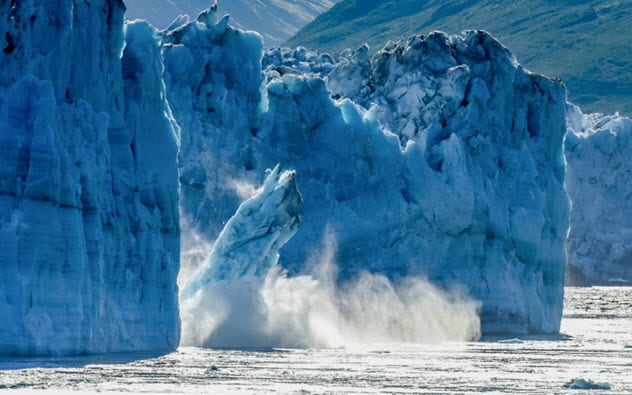
Alaska’s annual spring melt is a dodgy time for the locals. Many rely on frozen waterways as a means for transportation. Scientists keep a close watch on the temperatures to make sure that nobody uses the lanes when the seasons change and spring weakens the ice.
Alaska is the fastest-warming state in America, but in 2019, this fact brought tragic consequences. Temperatures suddenly spiked, and before anyone knew it, one of Alaska’s hottest springs was upon them. A record-breaking melt followed and thinned the waterways long before anyone suspected it.[3]
Two vehicles plunged through the ice. One incident claimed the lives of two men, while the other killed a family of three, including a young child. The dangerous ice also disrupted the livelihoods of communities still reliant on their traditional hunting lifestyles.
The worst disruption was surely experienced by the people of Shishmaref island. The melt damaged the coastline so much that the entire town moved to another location.
7 Deadly Dust Storm

Dust storms can interfere with transportation, visibility, and sometimes health. But normally, they do not kill a large number of people. That changed in 2018.
Northern India was settling in for the evening when an enormous dust cloud enveloped an area spanning the western state of Rajasthan, Delhi, and the eastern state of Uttar Pradesh. When the sand settled, over 100 people were dead.
Dust storms are normal for the region, but this one surprised even Rajasthan’s disaster management team. Its secretary, salted with 20 years of experience, had never seen dust storms wreak such damage. When meteorologists analyzed the event, they discovered why the storm had such an unusual size and strength.
That night, a massive thunderstorm system arrived and pummeled the Earth with downbursts. The latter are wind columns driven downward, and they produce among the most powerful gusts on record. The 2018 storm’s fatalities were caused by the intense winds that toppled large buildings, injuring and killing those within.[4]
6 Climate Change’s First Mammal Victim
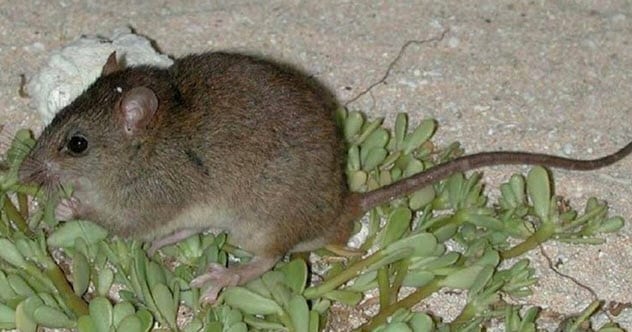
In 2009, a fisherman saw a rat on an island in the Great Barrier Reef. It would be the last sighting of the Bramble Cay melomys. First spotted in 1845, a healthy population of the creatures lived on the tiny island of Bramble Cay and nowhere else. By 1978, there were still hundreds of the rodents.
Twenty years later, rising sea levels had destroyed 97 percent of their habitat. The rare animals struggled to adapt to this change. By the time researchers decided to catch a few, they were too late. In 2014, they searched what remained of Bramble Cay but found no trace of its unique occupant.[5]
In 2016, the Australian government declared the Bramble Cay melomys extinct. The loss of this species comes with a distinction. Since rising sea levels are linked to climate change, the melomys was likely its first mammalian victim. Inherently, the rats were doomed because they had nowhere to flee. Similarly, if shorelines continue to creep inland, other island animals could suffer the same fate.
5 Epic Evacuation
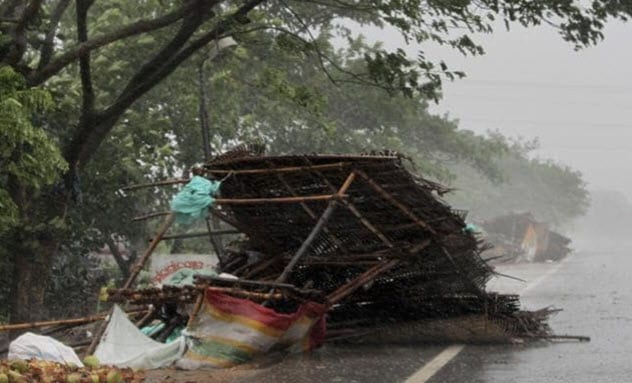
In 2019, the India Meteorological Department (IMD) noticed a blip on their screen. They recognized trouble when they saw it. The approaching cyclone, named Fani, promised to be devastating as it headed for the Bay of Bengal.
India is no stranger to such storms. In 1999, one made landfall in the same place and killed 10,000 people. For this reason, IMD took Fani seriously. In what became India’s biggest evacuation and one of the largest in human history, over a million people fled to safer grounds. This time, the loss of life totaled 16.
Bangladesh fared worse. When Fani raged over to India’s neighbor, it wrecked over 1,000 houses. It also submerged dozens of villages, killing five and injuring 63.
Despite all the damage, improved early warning systems gave civilians a better chance of survival. Indeed, the subsequent evacuations (also around a million for Bangladesh) made the difference between 10,000 people dying in 1999 and 21 in 2019.[6]
4 Southern Hemisphere’s Worst Disaster

On March 14, 2019, hurricane Idai hit Mozambique. It made landfall near Beira as a monster storm. The resulting storm surge triggered floods that swept away roads and buildings.
The catastrophic event did not stay in Mozambique. The same forceful floods razed infrastructure in Malawi and Zimbabwe. As many as 1,000 people were thought to have been killed in Mozambique alone.
Although hurricanes, also known as cyclones and typhoons, hit countries around the world, the strength of this storm was almost unprecedented for the region. When the UN World Meteorological Organization analyzed the event and the damage, it released a statement saying that it was likely “the worst weather-related disaster to hit the southern hemisphere.”[7]
Predicting hurricanes is not a precise science, which is scary enough considering how deadly they are. Worse, scientists agree that their numbers and strength are likely to increase due to global warming.
3 The 15-Year-Long Spill

Oil spills are bad enough when they last a few weeks or months, but one has been making a nuisance of itself for 15 years. In 2004, Hurricane Ivan destroyed an oil rig owned by Taylor Energy in the Gulf of Mexico. The company managed to fix some of the leaking pipes. However, the spill continued, and today, the fumes are almost unbearable off the coast of Louisiana.
For years, Taylor Energy, the Coast Guard, and the government attempted to stop the leak. Nothing worked. Nobody is even sure how much oil is escaping, although some estimates claim 100 barrels a day.
Needless to say, the situation is an ecological nightmare. Everything that lives in the Gulf of Mexico travels through this region. One reason why all attempts met with failure is that a mudslide hid the pipes deeply under sludge.
The place has become a high-risk area as well as a major engineering problem. If no solution is found, it will not stay a 15-year-long leak. There is enough oil to continue gushing into the ocean for the next 100 years.[8]
2 Daintree Disaster
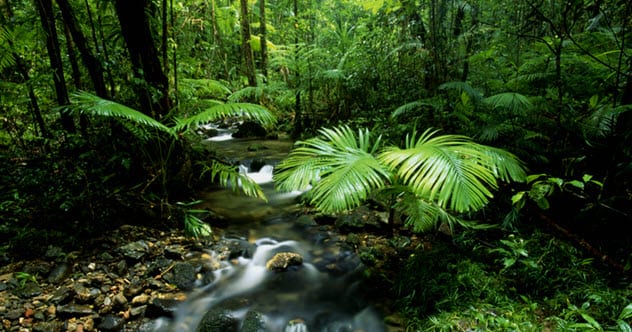
Something is dying in the shadow of the Great Barrier Reef. The reef’s plight is well publicized. In a nutshell, global warming and bleaching has already destroyed half of its coral. It continues to receive funding and high-tech rescue plans, such as 3-D-printed coral and robots delivering coral babies to the reef.
Running parallel to this natural wonder is a rain forest called Daintree. This is the world’s oldest rain forest. Its trees and vines arose around 150 million years ago on the supercontinent Gondwana, making Daintree older than humanity.
Covering 450 kilometers (280 mi) in northern Queensland, the forest holds more than one-third of all Australian mammals, half its bird species, 60 percent of the country’s butterflies, and 41 percent of the freshwater fish species. Although most people are not aware of the place, it is listed as the “second-most priceless” World Heritage area of over 173,000 sites.[9]
Decades of deforestation weakened Daintree, which is also directly threatened by climate change and heat waves. Some of its species are vulnerable to heat and have begun to disappear. Researchers fear that the hot weather could trigger a mass extinction and even destroy the irreplaceable wonder.
1 The United Nations Report

In 2019, the United Nations released a preliminary report on Earth’s biodiversity. It drew on the wisdom of 15,000 research papers to produce an 1,800-page report. In particular, it looked at extinction and human factors like population growth and greenhouse gas levels.
Nobody expected good news, but the document showed that things were worse than expected. Ominously, it warned of a massive biodiversity loss because of human activities. Factors like warming oceans, climate change, and deforestation are annihilating species at a breakneck speed.
The trend points to a frightening reality. In the past, there had been five mass extinctions. The report suggested that the Earth was already in the throes of the sixth. It was not just the animals. The report concluded that half of the world’s rivers and 40 percent of the oceans showed severe degradation. Around 75 percent of the land showed the same negative human-related impact.[10]
Read about more devastating disasters that the world has forgotten on 10 Devastating Natural Disasters Forgotten By Time and 10 Lesser-Known Disasters of the 20th Century.
